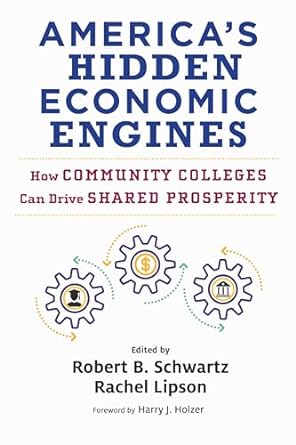Go back


Americas Hidden Economic Engines How Community Colleges Can Drive Shared Prosperity(1st Edition)
Authors:
Robert B. Schwartz, Rachel Lipson, Nancy Hoffman, Harry J. Holzer

Cover Type:Hardcover
Condition:Used
In Stock
Include with your book
Free shipping: April 03, 2024Popular items with books
Access to 3 Million+ solutions
Free ✝
Ask 10 Questions from expert
200,000+ Expert answers
✝ 7 days-trial
Total Price:
$0
List Price: $48.30
Savings: $48.3(100%)
Book details
ISBN: 1682538168, 978-1682538166
Book publisher: Harvard Education Press (June 6, 2023)
Get your hands on the best-selling book Americas Hidden Economic Engines How Community Colleges Can Drive Shared Prosperity 1st Edition for free. Feed your curiosity and let your imagination soar with the best stories coming out to you without hefty price tags. Browse SolutionInn to discover a treasure trove of fiction and non-fiction books where every page leads the reader to an undiscovered world. Start your literary adventure right away and also enjoy free shipping of these complimentary books to your door.
Americas Hidden Economic Engines How Community Colleges Can Drive Shared Prosperity 1st Edition Summary: Five in-depth case studies reveal the innovative practices that position U.S. community colleges as pathways to quality employment. In America’s Hidden Economic Engines, editors Robert B. Schwartz and Rachel Lipson spotlight community and technical colleges as institutions uniquely equipped to foster more equitable economic growth across America’s regions. As Schwartz and Lipson show, these colleges are the best-placed institutions to reverse the decades-long rise in US economic inequality by race, class, and geography. In the book, Harvard Project on Workforce researchers introduce detailed case studies of five institutions—Lorain County Community College in Ohio, Mississippi Gulf Coast Community College, Northern Virginia Community College, Pima Community College in Arizona, and San Jacinto Community College in Texas—that show what is possible when governments, employers, and communities invest in their community colleges’ economic and workforce development mission. These case studies reveal key institutional policies and practices, leadership behaviors, and organizational structures of successful collaborations between colleges and their regional partners in the public and private sector. Each case underscores how, although community colleges face distinct challenges based on local context, successful schools demonstrate a consistent focus on economic mobility and good jobs across all their programs and activities. In a concluding chapter, the editors champion community colleges as the most critical institutions for the future of US workforce development policy.
Customers also bought these books
Frequently Bought Together
Top Reviews for Books
Keith lebanowski
( 4 )
"Delivery was considerably fast, and the book I received was in a good condition."










